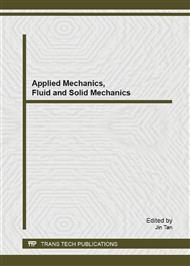p.184
p.189
p.194
p.200
p.206
p.211
p.215
p.221
p.226
Preparation of Ni-Doped MoS2 Microsphere and its Superior Electrocatalytic Hydrogen Evolution Ability
Abstract:
To find a cheap and effective hydrogen evolution reaction catalyst, a series of Ni-doped MoS2 microspheres consisting of MoS2 nanosheets have been prepared via hydrothermal synthesis and characterized by scanning electron microscopy (SEM), and X-ray powder diffraction (XRD). Their performance as electrochemical hydrogen evolution reaction (HER) catalyst was studied. It is found that the Ni-doped MoS2 exhibited superior electrocatalytic activity in the HER to undoped MoS2 catalysts. The overpotential of Ni-doped MoS2 has decreased compared with that of undoped sample, indicating an improved activity in HER. Furthermore, the cathodic current for the Ni-doped MoS2 catalyst is about 9 times as much as that for undoped MoS2. Based on our findings, the resulting Ni-doped MoS2 might be promising inexpensive alternative to platinum catalysts in hydrogen production.
Info:
Periodical:
Pages:
206-210
Citation:
Online since:
December 2013
Authors:
Keywords:
Price:
Сopyright:
© 2014 Trans Tech Publications Ltd. All Rights Reserved
Share:
Citation:


